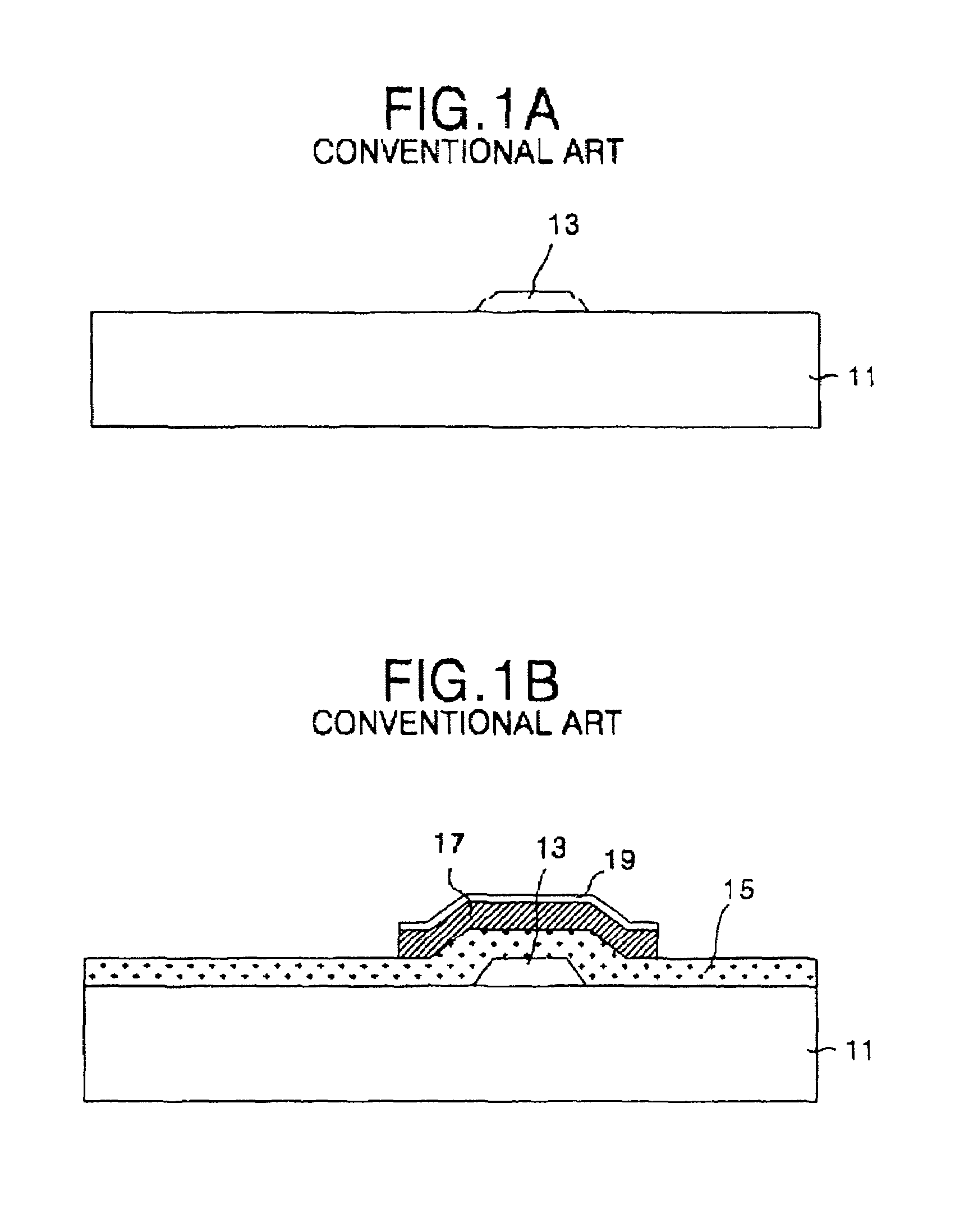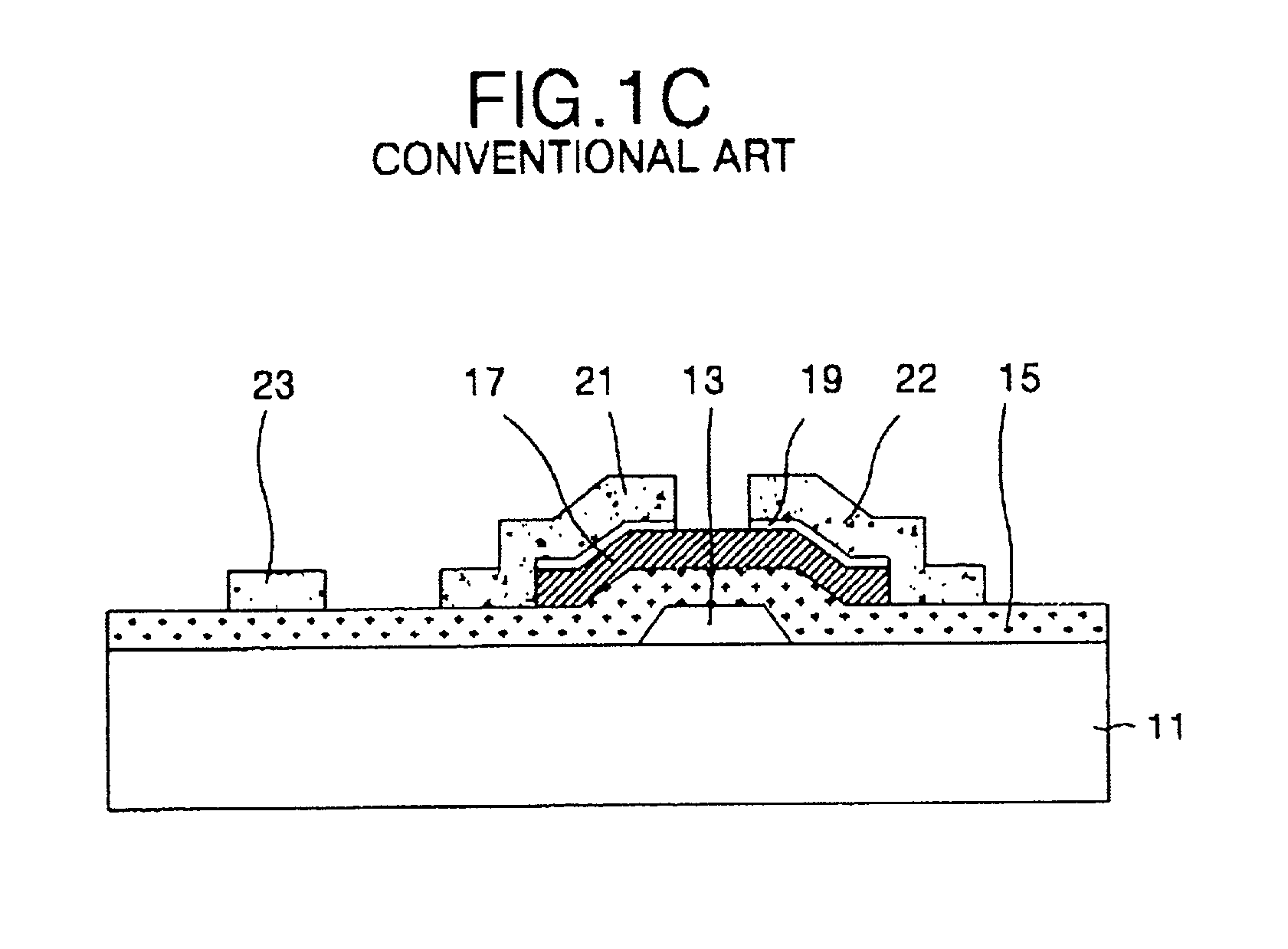Method of fabricating liquid crystal display
a liquid crystal display and liquid crystal technology, applied in the field of liquid crystal display, can solve the problems of electrical shorting of adjacent pixel electrodes, insufficient light energy being delivered to the exposed area, etc., and achieve the effect of preventing electrical shorts
- Summary
- Abstract
- Description
- Claims
- Application Information
AI Technical Summary
Benefits of technology
Problems solved by technology
Method used
Image
Examples
Embodiment Construction
[0026]Reference will now be made in detail to the preferred embodiment of the present invention, an example of which is illustrated in the accompanying drawings.
[0027]Referring to FIG. 2A, aluminum (Al) or copper (Cu) is deposited on a transparent substrate 41, such as by sputtering technique or electroless plating, to form a metal thin film. A glass, a quartz, or a transparent plastic may be used for the transparent substrate 41. Then, the metal thin film is patterned to remain only at a desired portion of the transparent substrate 41 to form a gate electrode 43 that is electrically connected to a gate line (not shown). Patterning is beneficially performed by photolithography using a wet method.
[0028]Referring to FIG. 2B, a gate insulating film 45, an active layer 47, and an ohmic contact layer 49 are sequentially formed on the transparent substrate 41, beneficially by chemical vapor deposition (CVD), so as to cover the gate electrode 43 and the gate line (which is not shown). The ...
PUM
| Property | Measurement | Unit |
|---|---|---|
| temperature | aaaaa | aaaaa |
| thickness | aaaaa | aaaaa |
| temperature | aaaaa | aaaaa |
Abstract
Description
Claims
Application Information
 Login to View More
Login to View More - R&D
- Intellectual Property
- Life Sciences
- Materials
- Tech Scout
- Unparalleled Data Quality
- Higher Quality Content
- 60% Fewer Hallucinations
Browse by: Latest US Patents, China's latest patents, Technical Efficacy Thesaurus, Application Domain, Technology Topic, Popular Technical Reports.
© 2025 PatSnap. All rights reserved.Legal|Privacy policy|Modern Slavery Act Transparency Statement|Sitemap|About US| Contact US: help@patsnap.com



